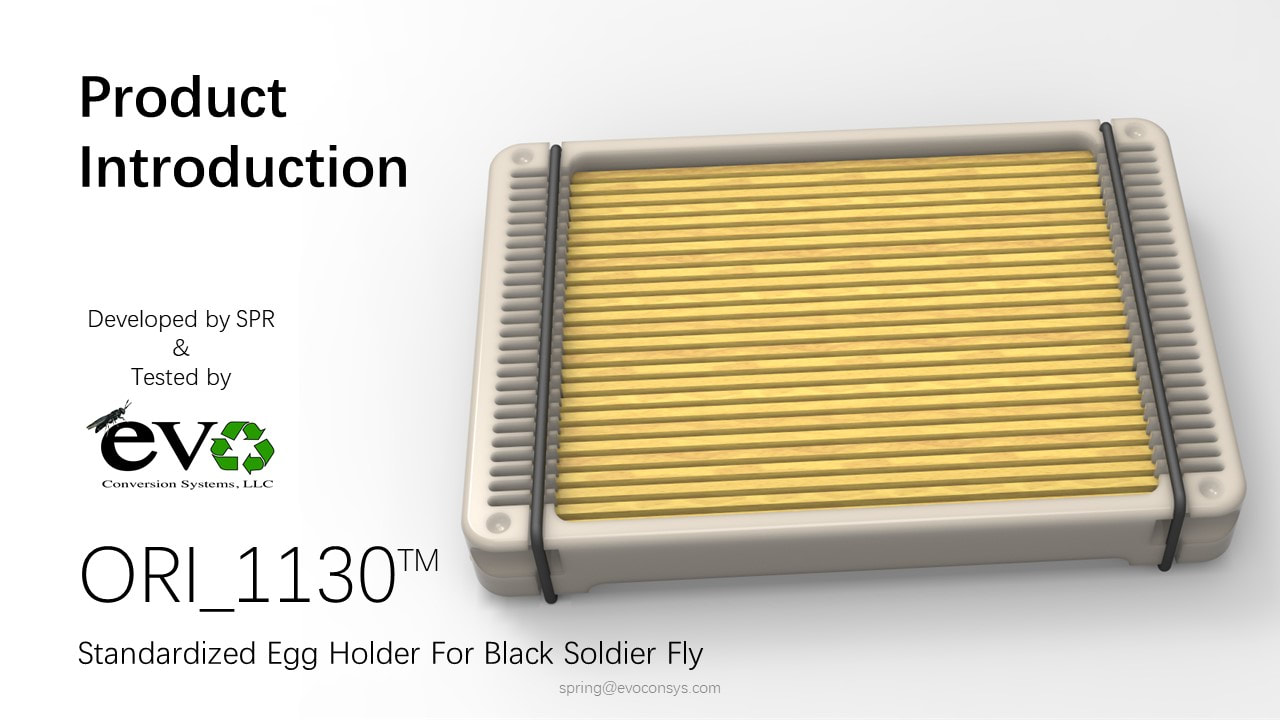|
6 Comments
Wisdom from The Wizard of Oz–an American classic movie (adapted from a series of books by L. Frank Baum): If you did not recognize the play on words in the title, they come from the phrase, "lions, and tigers, and bears, oh my!". Briefly, this was an expression chanted by characters in the aforementioned movie who feared that they may come in contact with these animals as they journeyed through a forest to visit the "great and powerful Wizard of Oz" who allegedly could solve all of their problems. So how does this relate to rearing edible insects? Well, if you have not already, there is a good chance you will experience a disease outbreak. Some may even say it is inevitable. I pray that if you haven't faced this challenge, that you never have to deal with it. But for those who have, you probably felt or understand the frustration in losing some or all of your colony. Not to mention the lurking challenge of executing a solution (identifying the pathogen, deciding how to save the colony, properly cleaning the equipment and facility, and deciding what protocol needs to be implemented) to avoid an outbreak again. Unfortunately, unlike in the movie, chanting against these pathogens will not be helpful and there is no wizard that can make them disappear. To make matters worse, little is known about specific pathogens in BSF and other edible insect systems. But knowledge, according to the Wizard of Oz, comes from experience. So, as this industry grows, we will learn more and more about the infectious agents that threaten our colonies. Fortunately, I found two recent publications that focus on this issue. The first is a review by Maciel-Vergara et al. (2021). This paper discusses various pathogens, abiotic and biotic conditions that foster the development of diseases, and measures to control outbreaks. The second paper, by Lecocq et al. (2021), focuses on the susceptibility of adult BSF (survivorship and egg-laying capacity) to one fungal pathogen. Both papers are well-written and informative, and hopefully, we continue to see more publications like them soon. For more detailed information regarding the content of the papers discussed above, please see the references below. Happy reading until next time! Literature cited: Maciel-Vergara, G., Jensen, A. B., Lecocq, A, and Eilenberg, J. 2021. Diseases in edible rearing systems. Journal of Insects as Food and Feed. 7(5), 621-638. Lecocq, A., Joosten, L., Schmitt, E., Eilenberg, J., and Jensen, A. B. 2021. Hermetia illucens adults are susceptible to infection by the fungus Beauveria bassiana in laboratory experiments. Journal of Insects as Food and Feed. 7(1), 63-68. AuthorChelsea Miranda, PhD I recently found Lu et al. (2021), which examined BSF development from a proteomics prospective. For those of us without a background in proteomics, the authors do a really good job of explaining their objectives and findings and the significance of this research in simple terms. Briefly, all life activities depend on the functions of proteins. The authors determined which proteins were related to the insulin signaling pathway (ISP; regulates feeding and growth), fatty acid biosynthesis (FAB), and the toll/immune deficiency pathway (toll/IMD; regulates antimicrobial peptide production); and furthermore, which proteins were upregulated or downregulated during BSF larval development. The results in a nutshell (for more details, please see the citation below): Over 5000 proteins were identified, and of those, nearly 4000 have functional annotation in a database (so for most of the proteins identified, we have reference information available). They also found that the upregulation and downregulation of proteins varied across instars. For example, more ISP proteins were expressed during early development (first instar) and later (second through fourth instars) more FAB proteins were expressed. And this makes sense because early larval development is categorized by breaking down large molecules into smaller molecules followed by rapid growth and adding body mass in later development (to sustain their adult livelihood). Overall, this is a really interesting study because we are on the cusp of engineering BSF for specific purposes and this research brings us closer to that. Imagine the time when we can manipulate the expression of the ISB proteins so that BSF eat more to degrade more waste or less to optimize BSF protein production. How cool would it be if we could control the expression of the FAB proteins to optimize fatty acid production/extraction for the oil industry or do the same for the IMD proteins for the pharmaceutical industry? This is the next frontier for BSF production, and I look forward to seeing what comes from this. Literature cited: Lu, L., Wan, Q., Xu, Y., Shen, H. and Yang, M., 2021. Proteomic Study Reveals Major Pathways Regulating the Development of Black Soldier Fly. Journal of Proteome Research. AuthorChelsea Miranda, PhD Stepping outside of the normal discussion of insects in food and feed, today, I want to highlight an area of BSF research that is gaining attention, with applications in many industries (e.g., healthcare, water treatment, agrochemicals, textiles, beauty, and food processing) [1-4], and a market expected to grow considerably in the next decade [5]–chitin. Unfortunately, chitin, in general, is an overlooked and underutilized by-product of BSF mass-production. It is something that all mass-rearing facilities produce but few exploit. One reason may be because we lack information on commercialization of the extraction process, but researchers at the University of Warwick are working on this as well as ways to extract BSF chitin with readily available and inexpensive materials [7]. Others are also interested in eco-friendly extraction. methods. For example, Tan et al. (2021), used lactic acid, acetic acid, ethanol, and bacterial proteases to remove fat, minerals, and proteins from the BSF exoskeleton to isolate chitin [3]. I look forward to advancements on this topic and believe as the research expands, we will find an economical, feasible, and environmentally safe process to extract BSF chitin on an industrial level. Keep your eyes peeled, we are not too far away from this. Soon, the BSF will leave its mark on many more industries outside of food and feed. Literature Cited: [1] Bhavsar, Parag S., Giulia Dalla Fontana, and Marina Zoccola. "Sustainable Superheated Water Hydrolysis of Black Soldier Fly Exuviae for Chitin Extraction and Use of the Obtained Chitosan in the Textile Field." ACS omega (2021). [2] Soetemans, Lise, Maarten Uyttebroek, and Leen Bastiaens. "Characteristics of chitin extracted from black soldier fly in different life stages." International Journal of Biological Macromolecules 165 (2020): 3206-3214. [3] Tan, Yun Nian, Yi Ling Chin, and Wei Ning Chen. "Comparison of Sustainable Lipid and Protein Removal Methods for the Isolation of Insect Chitin from Black Soldier Fly Exoskeleton." ACS Food Science & Technology (2021). [4] Złotko, Katarzyna, et al. "Isolation of Chitin from Black Soldier Fly (Hermetia illucens) and Its Usage to Metal Sorption." Polymers 13.5 (2021): 818. [5] “Chitin Market.” Future Market Insights (FMI) | Smart Market Intelligence for Smarter You, www.futuremarketinsights.com/reports/chitin-market. [6] Morganti, Pierfrancesco, Gianluca Morganti, and Maria-Beatrice Coltelli. "Smart and Sustainable Hair Products Based on Chitin-Derived Compounds." Cosmetics 8.1 (2021): 20. [7] “News & Events.” Chitin Can Be Successfully Extracted from Black Soldier Fly Husks, University of Warwick, 27 Apr. 2021, warwick.ac.uk/newsandevents/pressreleases/chitin_can_be/. AuthorChelsea Miranda, PhD On today's menu, earth caviar: Discussing Americans' perceptions of insects as feed and food3/29/2021 How many times have you seen, “By 2050 the human population is expected to grow to… and feed/food production will need to increase by…”? The fear of food insecurity is real. But we have seen its ugly face before during the first and second world wars. This leads me to wonder: can food conservation efforts in the past help us address the issue of food insecurity now and in the future? Maybe. Today, we suggest using insects to mitigate protein deficits; during the world wars, at least in the US, the solution was to eat animal organ meats (e.g., kidneys, liver, heart). Similar to insects, organ meats were not popular in American diets. And asking Americans to change the meat they consumed–something that was a staple item on American plates–was a huge challenge. So, what do Americans think of BSF in feed and food? Higa et al. (2021) suggests two significant predictors that influence the willingness of Americans to feed BSF to animals or include insects in their own diet: 1) participants were informed of the benefits of eating insects (e.g. less pollution, less greenhouse gases, less resources, and highly nutritious), and 2) whether participants thought insects were disgusting (termed 'disgustingness'). Results showed that both factors predicted the participants’ willingness to feed BSF to their dogs, but only disgustingness was a significant predictor for overall willingness to eat BSF directly or indirectly (when they are fed to farmed animals that are consumed by Americans). These results are fascinating as they may suggest different ways to campaign for insects in feed or food. If insects in feed (for animals not consumed) is the goal, discussing the benefits of insect production can be useful. However, if insects in human food is the goal, this approach may not be effective, and it may be worth addressing the issue of disgustingness instead. Even more interesting… The findings about insect inclusion in American diets aligns with the campaign to eat organ meats employed by the US government during WWII when Americans were forced to ration meat. Instead of approaching the situation with, “what can we do to convince Americans to eat organ meats?" (i.e. discussing the benefits of insect production), which was the focus during WWI when meat was not rationed, the approach during WWII focused on "why are Americans not including organ meats in their diets?” (i.e. addressing the issues with insects, such as disgustingness) (Romm 2014). The campaign in WWII was successful, but the effects did not last long. Today, there are probably more Americans that do not eat organ meats than those that do. So, back to my question: can food conservation efforts in the past help us address the issue of food insecurity now and in the future? If including insects in the American diet is the end goal, history has taught us that we should understand why insects are not included and also determine how to sustain their inclusion. And, from the aforementioned study, probably do the same for animals intended for human consumption. This is important because majority of BSF papers discuss the benefits of insect production, but too few have considered the other significant predictor. I wonder if we could make more headway with our campaign if we also confronted the disgustingness factor. For the moment, earth caviar, anyone? How about some black butter pods? Higa et al. (2021) also found that Americans prefered these names over “black soldier fly larvae”. But really, “What’s in a name?” Does a black soldier fly by any other name not taste as sweet? I guess not. Higa, J. E., Ruby, M. B., & Rozin, P. (2021). Americans’ acceptance of black soldier fly larvae as food for themselves, their dogs, and farmed animals. Food Quality and Preference, 90, 104119. Romm, Cari. (2014). "The World War II campaign to bring organ meats to the dinner table." The Atlantic 25. Author Chelsea Miranda, PhD Diet is one of the most widely studied topics in BSF literature. So many articles—so many different diets. The information can be overwhelming, but the bottom line is that diet impacts growth and development. You may be thinking, well, that’s a no-brainer. We have seen countless times that if we feed BSF a low-quality diet, we can expect prolonged development, reduced larval weights, and reduced survivorship, etc. But, do you know why this occurs? Metabolism is key—the feed we give BSF is either assimilated into new biomass or is utilized to generate energy. I recently found a new BSF publication that investigated how diet quality effects metabolic performance and the findings lend insight as to why poor diets result in reduced growth and development. I have included the citation below if you wish to look up the paper for specific details about the study. To summarize the results, Laganaro et al. (2021) found that larvae fed a low-quality diet sustained their maximum growth rate for less time than those fed a high-quality diet. So, on the surface, when we feed low-quality diets, we see delayed development and small larvae, and one of the reasons is because the larvae are not meeting their maximum growth rate for the same amount of time as they would if they were fed a more nutritious diet. Why? Because of the demand for maintenance purposes. Larvae fed a poor diet have higher energy requirements and higher CO2 respiration, so more of the feed is lost to energy production and respiration; therefore, less is available for new biomass. And collectively, this slows the growth rate and results in smaller larvae. Although BSF are generalist feeders, the authors make an important statement worth noting, and that is that feed conversion into new biomass is substrate specific. In other words, as Jeff Tomberlin once told me, “Not all diets are hot dogs”—meaning the composition of diets differ and the ability of BSF to convert their feed will vary. I wondered after he said that when and where I would use that little nugget of knowledge, and I think I found the perfect place. The take home message is if your larvae are developing slow and are small, and you are looking for ways to change this, a good starting place is to go back to the basics and evaluate your diet. This makes me think: if only junk food would keep me young and skinny… Laganaro, Marcello, Simon Bahrndorff, and Niels Thomas Eriksen. "Growth and metabolic performance of black soldier fly larvae grown on low and high-quality substrates." Waste Management 121 (2021): 198-205. AuthorChelsea Miranda, PhD I am excited to contribute to this blog and talk about all things black soldier fly. But first, a little about me... It is fair to say that I am not your typical "bug loving" entomologist. In fact, as a child I was terrified of insects- and to be honest- I still am to some extent. So how does someone who fears insects go on to study and then work for a company that mass rears them? This seems odd. I know. The simple answer is that I have a greater love for domestic animals (and I am not afraid of the insects that plague them). There hasn't been a time in my life that I did not have a pet. I grew up raising gerbils, turtles, rabbits, ducks, pigs, and dogs- even an arctic wolf. So naturally, upon entering college, I knew I wanted to study animals. Initially, my bachelor's degree focused on animal science, and my love and desire to help them ultimately led me to studying entomology. I completed my B.S. in Entomology at Texas A&M University in 2011 and was primarily interested in pest control. Subsequently, I carried that interest through my master's degree at Tarleton State University where I studied the green June beetle, an insect that feeds on manure and is a pest of vineyards. As a bonus/side note- my advisor thought I needed to leave with a valuable skill and so he taught me how to make wine, something I still do from time to time. Still, I wanted to study insects associated with animals, which led me to my PhD. Enter the black soldier fly into my life. I started studying the black soldier fly in 2014 as a member of Dr. Tomberlin's lab at Texas A&M. Originally, my doctoral research centered on the competitive interaction between black soldier flies and house flies in manure. However, during pursuit of my PhD, the idea of industrializing insects as food and feed blossomed and my research changed accordingly with the addition of studying the bioconversion of black soldier flies and house flies fed manure (swine, dairy, and poultry) at different rearing scales (hundreds of larvae fed grams of diet vs thousands of larvae fed kilograms of diet). I also investigated the manure after fly digestion at two different scales to determine how scale impacts the ability of the flies to reduce various constituents (nutrients, heavy metals, and fiber) in manure. I graduated with my PhD in August 2019, and five months before completing my degree, I began working at EVO. Looking back, I never imagined I would study insects in this capacity, and yet, I am so grateful this is the was the cookie crumbled. I find it interesting that my goal to help animals led me to this point. Initially, I narrowly focused on helping animals via pest control, but I have found a better way to fulfill this aspiration. Not only did I meet my goal by working for a company that produces black soldier flies as a healthy treat for chickens, but by working in this industry, I am also part of a greater effort- one that improves the environment through waste management and promotes sustainable production of protein and fat for a variety of animals and other valuable purposes. And this was more than I could have ever envisioned. I am excited to provide fodder for this blog and look forward to discussing all of the new findings, beneficial attributes, factors that inhibit or enhance production, or any other topic that pertains to black soldier flies. AuthorChelsea Miranda, PhD I really like when the title truly captures the message being conveyed in a publication. This paper is an example of such an accomplishment. Given that several authors are from Colombia- I tend to believe the message is personal and sincere. The authors provide an overview of the black soldier fly as a means to create stable agricultural production in nations experiencing instability. While, I personally, appreciate the black soldier fly being used as the example, I believe it is only the beginning. As you all know, there are a number of other species that offer such opportunities. Regardless, I believe the authors offer a very coherent and impactful message demonstrating that insects as feed (and food) offer much more than industrial development and protecting the environment. Such systems, when implemented properly, can truly save lives beyond simple nutrition. Barragán-Fonseca, K. Y., K. B. Barragán-Fonseca, G. Verschoor, J. J. A. van Loon, and M. Dicke. 2020. Insects for peace. Current Opinion in Insect Science. AuthorJeffery K. Tomberlin, PhD, Entomologist for Peace Figuring out how Nature operates, replicating the process, and industrializing has been a 'holy grail' of humanity since the beginning of time for a multitude of topics. For example, and the first thing I thought of, 'lightening strikes the ground' and fire is produced- so take a piece of flint, strike a rock, get sparks and fire can be produced. Better yet- if it can be recreated- can we then use it as a model to better understand the process and enhance it (thinking lightening creating fire evolving to harnessing atoms to produce heat). The same is being done with the black soldier fly. Somehow, the larvae of this insect can digest a host of organic materials and produce waste that can be used as fertilizer and larval mass that can be used as feed. Can this system be replicated in a lab? Can such data result in a better understanding of the processes that allows for this insect to digest a plethora of wastes? Gold et al. (2020) is the first step in this direction. The results are mixed but definitely serve as a starting point for industrialization of this process in the case of Gold et al. (2020)- with the black soldier fly. Gold, M., J. Egger, A. Scheidegger, C. Zurbrügg, D. Bruno, M. Bonelli, G. Tettamanti, M. Casartelli, E. Schmitt, B. Kerkaert, J. D. Smet, L. V. Campenhout, and A. Mathys. 2020. Estimating black soldier fly larvae biowaste conversion performance by simulation of midgut digestion. Waste Management 112: 40-51. But, I leave you with this question (for fun): Can the ability of the black soldier fly be replicated in the lab and industrialized? Imagine- giant industrialized mechanical insect guts (think "Terminator" eating waste and pooping out fertilizer and protein being harvested from a secondary evacuation hole or better yet- Alien doing the same, 36 second mark of video) recycling organic waste and producing insect protein and fertilizer! AuthorJeffery K. Tomberlin, PhD, Black Lives Matter! |
AuthorIndividuals with over 25 years research experience with the black soldier fly. We are passionate about the science behind the black soldier fly and its ability to convert waste to protein. Get Notified Here
Archives
September 2022
Categories
All
Install an RSS app to get notified from us when a new post is up!
|
ServicesSupport |
About |


 RSS Feed
RSS Feed

